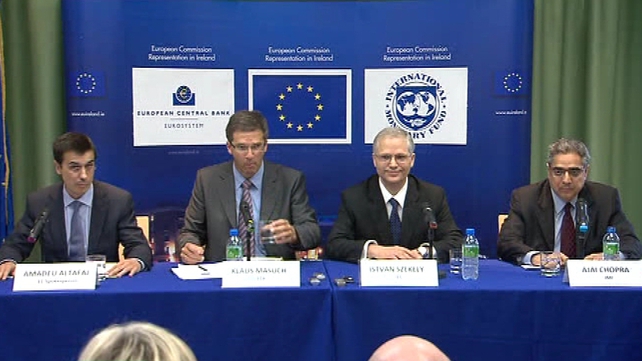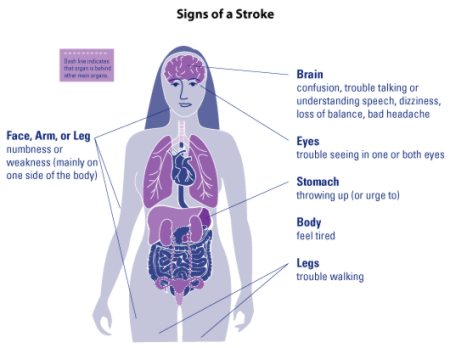Number of firms in Ireland going bust falls by a third amid growing confidence


THE NUMBER OF COMPANIES DECLARED INSOLVENT FELL BY A THIRD COMPARED TO A YEAR AGO, AS BUSINESSES CONTINUE TO STABILISE AFTER THE BUST.
New data from business
information firm Vision-net shows that 93 firms went bust in October, a decline of 33pc on the same period a year ago.
Among the firms that went under, some 65 were liquidated, 21 entered receivership, and an examiner was appointed to seven. Significantly, liquidations were down 32pc in the last 12 months, while the number of companies going into receivership fell by half.
Some 1,069 new companies were incorporated between July and September, Vision-net said. That is an increase of 17pc on the same period last year
Overall, 2,777 businesses were started during the month – a rate of 126 per day. Vision-net
managing director Christine Cullen said the results confirmed the trend of an
economy
that was at least bottoming out. “Our data has shown consistent positive signs of business recovery over recent months, and this trend has continued in today’s data.
“The number of companies failing is reducing significantly and on the other side of the equation, the number of new Irish companies now being created is also increasing. It points to a growing confidence in the Irish business
community
,” she added.
REAL ESTATE
Construction remained the sector with the most companies failing, although that is closely followed by the likes of retail, professional services, manufacturing and real estate.
Vision-net says that in September, there were 450 registered commercial and consumer judgments worth €40.6m awarded in the courts.
Of these, 295 were judgments awarded against consumers worth as much as €30.5m – well up on previous months. The Revenue Commissioners, credit unions, banks, real estate and local authorities made up most of the creditors.
Ms Cullen said the higher level of judgments against consumers needed to be monitored.
“The increase in the value of consumer judgments this month is a one to watch in the coming months, not least because of the potential it has to scupper growth in areas such as
retail or hospitality,” she claimed.
Irish home re-possessions will rise, warns the EU ahead of troika visit


The EU has warned that an increase in home repossessions is on the cards in its second-last inspection report before the end of the €85bn bailout.
It came as Finance Minister Michael Noonan met the IMF Christine Lagarde in Washington to discuss the possibility of getting a safety net loan after the country exits the bailout on December 15.
And staff from the IMF, the EU and the European Central Bank are arriving in Dublin tomorrow for the 12th and final ‘Troika’ inspection visit since the country entered the bailout in almost three years ago.
In its just-published report on its most recent inspection visit, theEuropean Commission warned that a rise in home repossessions is on the way as the banks finally tackle the issue of mortgage arrears.
“While safeguards have been put in place to keep co-operating borrowers in their homes, given the number of non-cooperating borrowers, particularly in investment properties, an increase in the number of repossessions from the very low levels experienced in recent years is likely,” it said.
The Government is required to still heed the directions of the Troika until the final bailout loan is paid over. But it has a choice of whether it wants to seek a safety net loan of up to €10bn from the Troika after the bailout – or to rely on the cushion of a €25bn cash pile it has borrowed in advance for
next year.
As part of his discussions, Mr Noonan had a 45-minute meeting with IMF deputy
managing director David Lipton early today in Washington followed by an evening meeting with IMF managing director Christine Lagarade at the Irish Embassy in Washington.
A spokesman for Mr Noonan said the agenda for both meeting was the same – the options available for exiting the bailout programme.
“Ultimately it is a matter for Irish Government to evaluate and decide on the post programme options,” he said.
The Government is understood to be leaning in the direction of
managing
without a safety loan facility from the Troika because it does not want restrictive conditions similar to the current bailout deal.
In its inspection report for its last visit in July, the European Commission mentioned the difficulties in achieving this year’s target of €300m savings from the Haddington Road public sector agreement. And it said the cost of liquidating the former
Anglo Irish Bank could lead to also lead to Budget overruns. This is because the State will have to pay the shortfall if there is another write down on the value of Anglo’s remaining toxic property loans as they are transferred to NAMA.
However, it said that Ireland was making “good progress” in dealing with the public and
private
debt which built up during the economic crisis. It said that the property tax had “proved smoother” to implement than the €100 household charge.
The Troika report reveal that the Government still has not decided on the level of water charges households will pay when the first bills arrive in January 2015.
However, it said that the Government wants the new Irish Water company to be excluded from its balance sheet and not counted as part of the national debt. It said this would require “a credible
plan
to guarantee that the company covers 50pc of operating costs from water charges”.
The maternal depression obsession causes anxiety


Exaggerating the risk of depression for both mothers and their children can only cause greater anxiety.
One
study
, published in the
Journal of the American Medical Association (JAMA),focused on how the
mental health
of children is detrimentally affected by the state of mind of their mothers.
Its main finding, as BBC News put it, is that ‘depression risk starts in the womb’. ‘Antenatal depression’, argue the report authors, was found to be an ‘independent risk factor’ for depression in offspring.
The other
study
was a report from Netmums, charity Tommy’s, the Institute of Health Visiting and the Royal College of Midwives. Based on a poll of 1,500 women who self-identified as depressed, this research found that many of these women reported ‘low mood and tearfulness’ and most frequently put their
problems
down to ‘trying to live up to unrealistic expectations’.
The
message communicated from these studies is that more must be done to help pregnant women and mothers with their feelings. One suggestion from the report authors is that pregnant women and midwives draw up a ‘wellbeing plan’ to promote ‘open discussions’ about a women’s feelings. The authors of the
JAMA study argue for ‘interventions’ during pregnancy, aimed at ‘preventing depression in the offspring of depressed mothers’.
Both reports create the impression that pregnant women and mothers are more depressed than we assume, and that this depression affects the
next generation. Yet, as I have argued elsewhere, there are good reasons to look more critically at studies and reports like this.
Measuring ‘the problem’
The starting point for studies like this is the measurement of depression in pregnant women and mothers. Yet when one looks closer, it becomes clear that measuring depression is an inexact science. Proportions of women said be depressed vary considerably. ‘One in 10’ is a statistic often cited, but other studies suggest ‘one in 12’ or ‘one in 15’, or even ‘one in four’. The Netmums report says ‘one in seven’. Those promoting maternal depression as a serious issue presumably intend the figures to highlight the size of the problem, but when the differences between sets of statistics are so pronounced, questions need to be asked.
So why are the figures so varied? Because the scales and reports used for maternal depression stats are varied and controversial. The most widely used
scale (used by
JAMA) is the Edinburgh Postnatal Depression Scale (EPDS), which involves a multiple-choice questionnaire.
For example, the first
question asks for responses to the statement ‘I have been able to laugh and see the funny side of things’. The female respondent then has to choose one of the following: ‘As much as I always could’; ‘Not quite as much so much now’; ‘Definitely less than I used to ‘; or ‘Hardly at all’. An overall score is then calculated by adding together scores for the 10 items.
While the responses may indicate something about the respondent’s mood and feelings, it is doubtful whether they form an adequate basis for a proper ‘diagnosis’. Indeed, over many years there have been questions raised about the number of ‘false positives’ (that is, women incorrectly diagnosed as depressed through use of the EPDS). Yet the authors of the JAMA study nowhere acknowledge this problem.
The Netmums survey suffers from the same deficit. The 1,547 women who took part in it ‘self-selected to do so’, on the basis that they experienced ‘mental health problems’ which were either ‘diagnosed by a health professional or self-diagnosed’. It may be that the phenomenon of ‘false positives’ is even more at issue here than in the JAMA study.
Official guidance in the NHS advises the use by health professionals of what are known as ‘the Whooley questions’ (just two questions) to assess ante-natal and post-natal depression (PND) in the first instance. On the NHS Choices pages about
diagnosing PND, it states: ‘Your GP should be able to diagnose postnatal depression by asking two questions: During the past month, have you often been bothered by feeling down, depressed or hopeless? During the past month, have you often been bothered by taking little or no pleasure in doing things that normally make you happy?’
It is surely sensible to question whether these methods of assessment provide reliable evidence for encouraging a woman to think of herself as ‘depressed’ and become subject to drug treatment or other forms of therapy. Over the years, I have encountered significant hostility when calling into question the notion that it is simply ‘a good thing’ to generate more and more efforts to ‘identify’ and ‘treat’ post-natal and ante-natal depression through these sorts of procedures. There is both bemusement at the proposition that it may not actually help, and the suggestion that it is harsh and unfeeling not to want to do as much as possible to recognise the ordeal of pregnancy and motherhood and get health professionals to help.
Yet ‘diagnosis’ of mental illness is not something that should be taken lightly. It inevitably places an individual’s ways of coping into the hands of someone else and demands in particular that they ‘open up’ about the most intimate aspects of their life, namely their feelings about themselves and their baby, to a professional. This takes matters out of the domain of privacy and intimacy and into another realm, and in doing so
a relationship of emotional dependency is created.
There is another more and more important reason for scepticism about the growing profile of maternal depression, too, and this is to do with the connections now routinely bandied about between depression and ‘damaged children’.
PREJUDICE ABOUT THE CHILD DISGUISED AS EVIDENCE
The
study published in
JAMA is titled ‘Maternal Depression During Pregnancy and the Postnatal Period, Risks and Possible Mechanisms for Offspring Depression’. As this title suggests, the hypothesis of the research is that there may be a relation between depression in mothers and that in their children which is in some way ‘passed on’. This is one of a very large and growing number of studies which use
information collected from large numbers of parents over decades to look for associations and correlations between aspects of their lives, behaviour and practices and those identified in their children. (The dataset used in the case of the
JAMAstudy is called the Avon Longitudinal Study of Parents and Children, ALSPAC.)
The
JAMA authors claim their research identified antenatal depression as a ‘risk factor’ for depression in children that should be taken seriously and investigated more. Yet, as they themselves suggest, the risk identified through their number-crunching is ‘small’. Hence it may also be argued that given the issues raised above about how ‘depression’ in the parents in the study was identified, the findings can be taken into consideration, but should not be a cause for alarm or suggestions of any kind that depression is ‘passed on’. Other limitations to the study are usefully discussed usefully
here.
Unfortunately, however, although sober assessment means the message could be ‘not that much to worry about’ or ‘we don’t know what there is to worry about yet’, the authors could not resist speculating about the ‘passing on’ of depression ‘in the womb’. They set up their paper by suggesting that a possible explanation for children of depressed mothers being themselves depressed is that ‘cortisol, elevated in depression, passes through the placenta and directly alters fetal neural development with long-term consequences’.
Notably this gloomy speculation about the indelible ‘hard wiring’ of the fetal brain was something others then picked up on with abandon, eschewing any need to express even mild caution about the idea that it ‘all goes back to the womb’. One professor from Kings College London told BBC News that the development of an individual’s mental health started in the uterus, and that ‘the message is clear’. Celso Arango, a professor of psychiatry from Madrid, commented to the Guardian: ‘Researchers are only just beginning to realise that it is not psychiatrists, psychologists or neuroscientists that are having the biggest impact on preventing mental health issues, it is gynaecologists.’
Six wonderfull Irish web women
running Irish-based technology companies
WHO ARE BUCKING A WORLDWIDE TREND IN AN INDUSTRY STRUGGLING TO ATTRACT FEMALES



Above 3 of the Irish Web Women l to R Cathriona Hallahan, Regina Moran, Kathryn O’Donoghue
While attracting young women into careers in technology remains an issue globally, here in Ireland, many of our leading tech companies have senior female leaders at the helm. This is the opposite experience to the tech sector in California’s Silicon Valley, where there is a lamentable dearth of top female executives.
Some would say that the technology industry has an image problem. It might seem like the preserve of the “geeky” man, which could put women off. In advance of the Dublin Web Summit, which takes place on October 30 and 31 in the RDS, ‘Weekend’ met six vibrant women at the very top of the technology industry in Ireland, who have reached their current roles from a variety of backgrounds and routes.
Cathriona Hallahan, Managing Director, Microsoft Ireland
Dubliner Cathriona Hallahan (48) has worked at Microsoft Ireland since 1986, and was appointed MD in March 2013. She is married to racehorse breeder Tim Molloy and they live on a farm with their daughter, Molly (13).
“I did a secretarial course after school and joined Microsoft in 1986 as an accounts clerk. My first job was to go out and buy biscuits for the tea. The company has developed and transformed over the past 27 years. When you are young and pro-active and willing to go the extra mile, you will be recognised for that in an expanding company.
“Promotions and recognition came quite quickly in the early days, but as I went up into
management and director roles, I was mainly competing with men who were quite senior and very qualified, often with experience from other companies.
“I always tell women that they need to be very open about their aspirations. I remember asking one manager why I hadn’t been interviewed a few years ago for a position that one of my male colleagues got, and he said that I hadn’t told him I was interested. I think there’s a slight attitude difference between men and women, in that a man is more likely to
apply for a job, thinking, ‘I have 80pc of what they’re looking for’, whereas a woman will hold back, thinking, ‘I haven’t got 20pc of the requirements’.
“My husband
works from home , so he’s there to pick our daughter Molly up and do the running around, which means I don’t have to worry about that side of things.
“I try not to work at weekends if I can, although I’ll
check my emails on the phone to see if anything is burning. I wouldn’t say I have the answer to the work/life balance, but it’s helped by having a really strong team.
“My management style is very open and transparent, and I qualified as an executive coach ten years ago as I’m very passionate about people. I love seeing people who have worked with me progressing in their careers, and thinking that I may have made a difference in their lives.”
Favourite apps, Newstalk, Xbox Music, Bing Travel
The next big thing, “Enterprise social networking, such as Microsoft’s Yammer, where a company’s internal and external use of social media is used to connect individuals who share similar business interests or activities.”
Tipperary woman Regina Moran is married to Jim, who is a stay-at-home dad to their three children, Conor (17), Maeve (14) and Eoghan (eight). Regina leads a team of 350 people as CEO of Fujitsu
Ireland . She is in her late 40s.
“I think it’s hard to have it all, and there are choices that have to be made along the way. There came a point where my husband Jim and I had to decide who was going to be more involved at home, as we knew we both couldn’t have high-flying careers and a family life with three children.
“At that time, Jim was a very successful electronic engineer, but my
career was a bit more advanced. It’s a tough decision for any family, particularly the person who has to let go of their career, but it gave us stability. I’d like to think we’re good parents and Jim is fantastic, as I don’t think I could do it without the support I get from him. It’s demanding for him, as the children are so involved in sports and music.
“I studied electronic engineering and, in the early days, it was very male-oriented. Later, I did an MBA because I wanted to run a company, and felt it would round out my technical background. I was thrilled being appointed CEO of Fujitsu Services in 2006 and Fujitsu Ireland in 2009, as although it’s a global company, you’re given a lot of autonomy to shape the destiny of your local organisation.
“Even though I love work, I enjoyed every second of my maternity leave with my children, as it’s a very precious time. When you are off, the organisation moves around you, and you can’t assume that you are in the same situation coming back as before you went. Organisations move on and maybe new people have joined, so you have to accept that and take it on the chin. You may need to re-establish yourself and keep believing that you have huge value to add.
“There are times when my job is very demanding, so when it’s less demanding, I try to spend time with the family and not get caught up with things for the sake of it. I keep meetings as short and focused as they can be. I don’t always succeed in switching off when I’m away, but it helps knowing my leadership team is first rate.
“Careers in technology are a passport to anywhere in the world. I’ve travelled a lot and am currently learning Japanese so that I can speak it in Tokyo. Our industry is new and exciting and diverse every day, and I get a great buzz from that. It energises me.”
Favourite apps, Global Corporate Challenge, Vimeo, JapEn (translator)
The next big thing, “Human-centric computing, ie, the collision of the physical and digital worlds using sensor technology and real-time
information . For example, Fujitsu in Japan has invented a walking stick for elderly people that monitors their heart rate and pulse. It detects falls and is connected to an alert centre.”
Kathryn O’Donoghue, Director of Ads Policy Operations in Europe, the Middle East and Africa at Google
After a diverse career in technology both in Ireland and abroad, Kathryn O’Donoghue, (49) has worked at Google since 2009.
She lives in Dublin with her partner, Willie Kavanagh.
“I’ve been working in the technology industry for a long time, and it’s clear there isn’t equality at the highest levels.
“When I think about the glass ceiling, there are two sides to it.
“Research shows that diverse teams in organisations will outperform non-diverse teams, so I think it’s an incredible waste of talent to ignore women or minorities for whatever reason, whether that is an unconscious bias or deliberate discrimination.
“It also isn’t
good business sense. From managing both men and women, I feel that women are more shy at articulating their ambitions.
“My advice to them is to say yes to opportunities when they are offered, and then figure out how to make it all work afterwards. As women, we have to step up and take on the roles that are there.
“I think the skills that helped me progress include being good at solving problems and getting things done.
“I’m optimistic and like to see the bright side, even if things get really bad.
“Courage helped as well, as I went to live in countries where I didn’t speak the language, and took
positions where I didn’t know the industry as well as the one I’d come from.
“I have lived abroad for years in Italy, Zurich and Paris, which was good fun, and that gave me the opportunity to learn new languages and explore other countries.
“I came back from Paris in 2008 for mainly personal reasons, as my partner Willie was based here, and we were commuting back and forth at weekends. I joined Google shortly after that.
“My job is busy, so it’s important to recharge.
“We go to our house in the middle of Wicklow at weekends, which overlooks a lake, and go hill-walking and do some gardening.
“I like to stay involved with my family, and Willie has a
lovely 22-year-old daughter, Sam, who is at college.
“I’m not very disciplined when it comes to switching off my phone.
“But I try not to
answer it outside of work unless something blows up, although I keep an eye on email.
“I tend to be quite relaxed, but everyone gets stressed at times, for example, if multiple, very serious deadlines are coming at the same time.
“I find that exercising and reading are great ways to get rid of stress because when you come back, the intensity is diminished.
“The hours can be long, and when l’m working in India, I can find myself doing 16 or 17-hour days. But then you can take the time to recover from it afterwards.
“It is important to develop your confidence, be ambitious, know your value, ask for opportunities and be willing to take risks.
“And understand that there are trade-offs – it’s very hard to have everything, so make those trade-offs intelligently.”
Favourite apps, Google Now, WhatsApp and Spotify
The next big thing, “That technology will be seamlessly integrated into everyday life through wearable computing, such as Google Glass and smart watches.”
Louise Phelan, Vice President of Global Operations in Europe, the Middle East & Africa at PayPal
Louise Phelan is from Laois and joined PayPal in 2006. Now in her mid-40s, she lives in Dublin with her husband, Noel, and has two step-children, Andrew (18) and Heather (16).
“My dream was to be a paediatric nurse, but I decided at 22 that it wasn’t the right path for me. I took a complete risk and changed my career path to study law, economics and credit
management .
“To be honest, my femininity or gender hasn’t impacted me at all in any role that I went for in my career. I was fortunate to be given great opportunities, and I grabbed them with both hands.
“I was lucky because I’ve had a good family and support mechanisms to make sure I was successful in my roles.
“There is quite a bit of travel involved in my job, because PayPal has multiple locations and our mothership is in the United States.
“Hours can be long because we work across global teams and different time zones, so it’s about balance and give and take and trying
to work things so it suits everybody involved as much as possible.
“I work very hard, but when I’m off, I
play hard too. Noel and I make time for ourselves. I also go to my gym at half-past-six in the morning and I don’t care what’s happening in the world.
“It’s not as easy some days if there’s a fire burning somewhere, but you just have to manage. I did stints moving around to different locations throughout my career, but I never permanently moved to another country as my family here are a huge part of my life.
“I’m one of 17 children and have nine sisters, so that keeps me busy. My mum, Delia, is 88, and seeing her every Saturday is very important to me as she’s been a fantastic support.
“I didn’t have children and the reality is that it was a choice that I made. I don’t think it was anything to do with my career, really, but was more related to the timing of where my life was and what I was doing.
“It probably made things easier in ways when it came
to work , and if I could do it again would I do it differently – who knows? I have two step-children, Andrew and Heather, and they’re both fantastic.
“My advice to other women is to follow your dreams and your hearts and stay true to yourself. You have to continually develop yourself and put yourself out there to network as that gives you an opportunity to showcase yourself and to understand who the other men and women in the industry are. And don’t take yourself too seriously!”
Favourite apps, PayPal, eBay, Facebook
Next big thing, “I think that soon we won’t carry money and all of our transactions will be done with our phones, so gift vouchers, etc., will all be stored in the one location.”
Sonia Flynn, Director, Facebook Ireland
Sonia, 38, is from Kildare, and now lives in Dublin with husband Joe and eight-month-old son Leon. Having joined Facebook in 2009, she was appointed director in 2011, and is responsible for more than 400 staff in Dublin.
“I studied applied languages so don’t have a technical background, and I oversee operations and the office in Dublin. Even though I work at Facebook, I also have a lot of fun with it personally, as it keeps me in
contact with people from way back or those I met travelling.
“I’m married seven years to Joe, and have spent at least half of that time on the road, having lived in places like Bulgaria, India and Poland. We had to make the long-distance thing work, and Joe has always been so supportive.
“I waited a while to have a baby, as I travelled a lot for my career and put some things aside at times. I was probably as surprised as anyone that I’ve had a baby, to be honest, including my parents!
“I’m just back after eight months’ maternity leave, and think some women, myself included, lose a little bit of confidence after having a baby and can suffer from feeling guilty.
“You also worry about re-engaging your brain and contributing at the same level when you return to work. We have a system here where you are paired up with someone who has been through the same thing, so you can talk through what’s on your mind. Even though I’m a senior person on site, I’ve taken full advantage of that with my “buddy” Katie, and she has been great.
“Before I returned, I spent a lot of time on my calendar trying to work things out. We have a fantastic childminder who comes to the house and looks after Leon. He has a better social life than I have and goes to a music class and interactive
play class.
“I would happily have worked really late before I had the baby, but now I try to make sure I’m home to see him off to bed, and then I can log back on afterwards.
“To relax, I love walking on Sandymount Strand, and my guilty pleasure is ’80s and alternative music. I did a DJ course when I was four months’ pregnant, as years ago I presented a show called Artbeat on Anna Livia.
“I told my husband that I wanted a non-mummy present last Christmas, so he bought me a mixing desk. Mind you, I’m probably not ready for public performances yet!”
Favourite Apps, Facebook, Airbnb, Hailo,
Next big thing, “The trend around apps continues and will deepen, so people will be able to do even more through their
phones .”
Fidelma Healy, Chief Operating Officer, Gilt Ireland
Originally from Limerick, Fidelma Healy lives in Dublin with her two children, Tim (20) and Emer (13). In her late 40s, she started with Gilt Ireland in March 2011, and was responsible for setting up its offices in Dublin and Limerick.
“The technology industry constantly changes, which I relish, as I thrive in that kind of environment. I’ve never been conscious of the glass ceiling because for me it was just a case of doing my job well and enjoying what I was doing.
“I’m a great believer in a good gender balance but have to admit that it can be hard to find female engineers with experience. We’ve agonised about it over the years and wondered if it’s because if you go back ten years, there weren’t as many females being encouraged to study maths. The experienced people we need may come from that time. I definitely see a mood change now and think a career in engineering could suit a lot of women as there is a lot of flexibility there.
“I’m a single mum, so I give an awful lot of my life
to work and then it’s about balance at home. What suffered for a long time was time for myself as my life was a cycle of work, home, and time with the children. I’ve got hill-walking at weekends now and prioritise it whether it’s sunny or snowing because being up in the mountains and away from it all is almost like a form of meditation that helps me to switch off.
“When they were
younger , I had to choose schools for my children that allowed me to drop them at 8am and collect them at 6pm or 6.30pm, which narrowed my options significantly.
“I don’t think my kids suffered as a result, and while I was the one who occasionally missed things like plays, I did my very best and managed to make most things.
“I want my children to understand that a woman’s
career is as important as a man’s and I think both of them see that.”
China watch-dog to monitor smog’s impact on our health
China’s health watchdog has vowed to set up a national network to monitor the impact of air pollution on human health within the coming three to five years.
The goal was revealed in a work plan on air pollution released by the National Health and Family Planning Commission on Monday.
Under the plan, the network will gather data on the compositions of PM2.5, airborne particles measuring less than 2.5 microns in diameter, in different regions and the density changes of main air pollutants, which will provide data support for the analysis and evaluation of their impact on health.
The document noted that the absence of a long-term, systematic monitoring system has prevented the country from uncovering the link between air pollution and human health.
According to the
plan
, the network will first cover a number of cities in 16 provinces and municipalities where smog is frequent as well as certain villages and towns in rural areas in six provincial-level regions by the year end.
The evaluation will be based on the integrated and long-term analysis of PM2.5 data, weather
information
and cases of local residents’ diseases and deaths, the plan added.
































